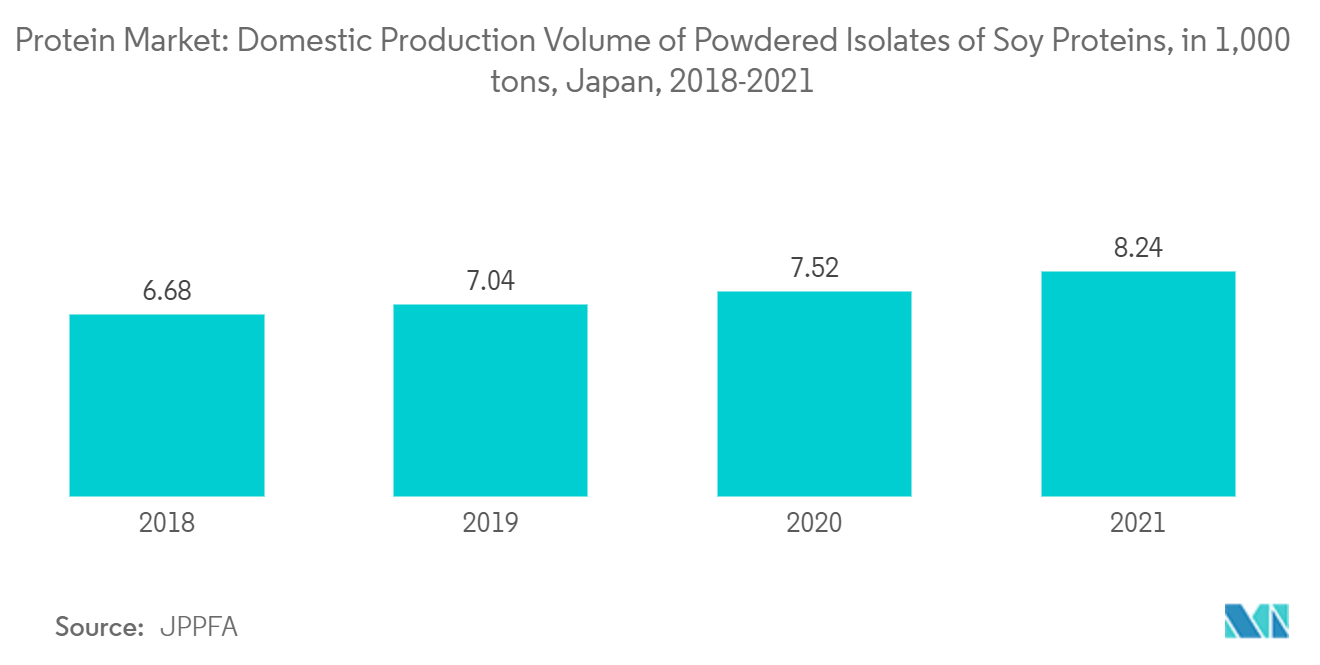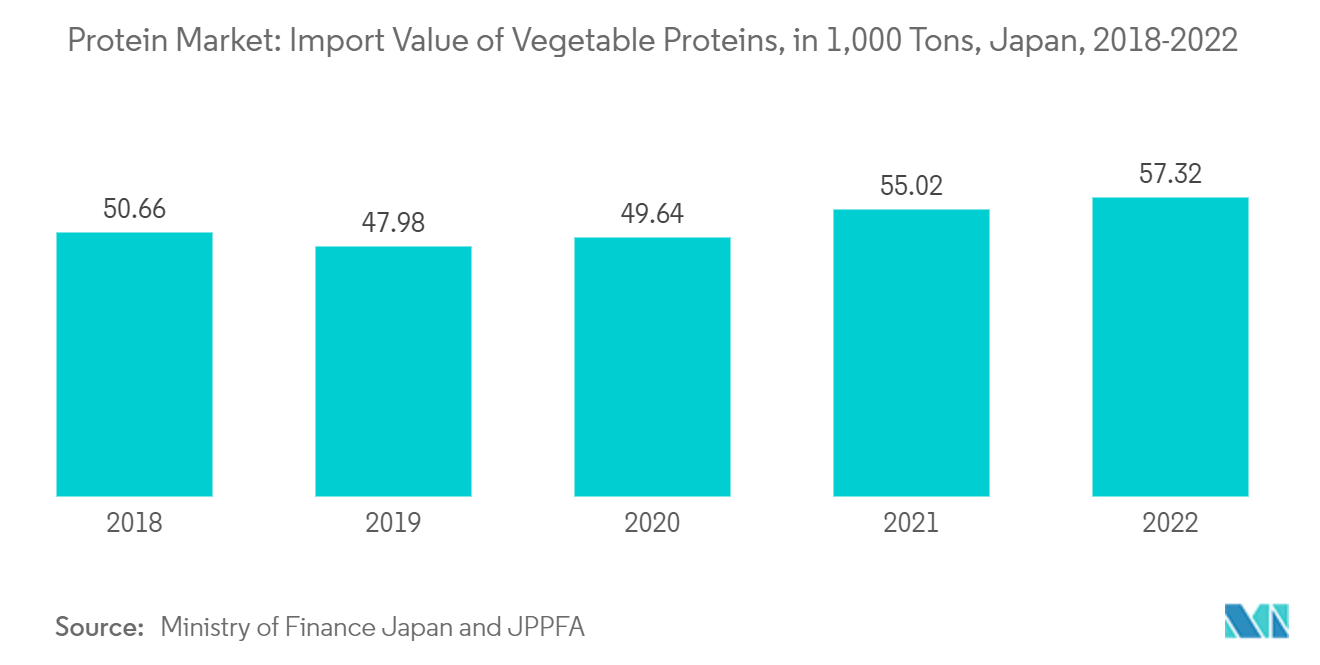Market Trends of Japan Protein Industry
Increasing Demand for Meat Analogues
- Plant protein remained the growing source due to the Japanese consumers' rising protein intake and a boom in alternative protein options. Consumers are increasingly becoming aware of environmental concerns associated with the procurement and production of animal protein and their need to switch to sustainable protein sources, such as plant and microbial. Such factors, coupled with the availability of different plant-based protein sources in the country, are driving the growth of the market.
- For instance, various plant protein sources available in the country include soy protein and pea protein, among others. Additionally, consumers' familiarity with soy is one reason why plant-based protein sources have been accepted in Japan. For instance, tofu and soymilk have long been eaten as part of the varied Japanese diet. Other soy-based alternatives, such as meat, fit neatly into this existing pattern.
- Moreover, such factors have resulted in several ventures investing in alternative protein space to tap the potential, which led to the increasing growth of the market eventually. Textured soy protein is an ideal meat substitute and is gaining higher traction among vegan and flexitarian consumers. This phenomenon augmented the growth of the protein alternatives market, which helps food manufacturers provide meat-like texture and flavor profiles to their portfolio of faux meat or vegan meat products such as nuggets, burger patties, sausages, and crumbles.
- Companies are innovating with new plant protein-based meat offerings, including plant-based hamburgers, tofu, and gyoza dumplings, among others, to target consumers who are accustomed to Japan's meat-rich diet.
- For instance, in January 2023, Roquette, a global leader in plant-based ingredients and a pioneer of plant proteins, announced its investment in DAIZ Inc. This Japanese food tech startup has developed breakthrough technology utilizing the germination of plant seeds combined with an extrusion process to enhance the texture, flavor, and nutritional profile of plant-based foods.
- Furthermore, with the increasing demand for plant-based ingredients, the production of various plant proteins is also increasing in Japan, which is expected to support the market's growth by providing enough supply. For instance, according to the Journal of Educational Development: Foundations and Applications in Japan, in 2021, the domestic production volume of powdered isolates of soy proteins in Japan amounted to around 8.24 thousand tons, which increased from 7.52 thousand tons when compared to the previous year. Such developments happening in the country are further expected to boost the market's growth during the forecast period.

Food and Beverages Accounts for the Largest Share
- Japan is known for its diverse and traditional cuisine, and its diet typically includes a mix of both plant-based and animal-based foods. However, the awareness regarding the increased intake of protein content through various foods and beverages consumed by consumers has been rising in the country in recent years due to various factors such as changing dietary preferences and increasing health awareness. These factors are driving the market of the food and beverages segment in the country.
- In the year 2021, there was an increase in plant-based meat and dairy products in the Japanese market, with new launches regularly. Domestic companies launched new alternative protein products. Nearly all major meat processors have released a plant-based meat alternative, as well as products from major plant oil crushers and soy-based processors, dairy processors, frozen food manufacturers, health food & drink manufacturers, as well as many major retail chains and major café and hamburger chains.
- Therefore, factors such as these are expected to increase the application of protein alternative ingredients in the country. Moreover, vegetable proteins utilized in Japan refer mainly to soy and wheat proteins, which can be added as an ingredient to processed foods or used as a meat substitute in the form of textured vegetable proteins.
- In line with this, players are also focused on offering protein ingredients that align with the manufacturers and the consumers' demands. For instance, ADM offers soy protein isolates in Japan that it claims can deliver nutrition and/or functionality in a variety of applications.
- According to the company, its soy protein isolates can be used in a long list of applications from beverages to extruded snacks and cereals, plus bars, dairy alternatives, meat and meat alternatives, sauces, gravies, and soups, and even feed & pet food. Such developments are expected to further boost the demand for protein ingredients from the food and beverages industries in the country, which eventually drives the market's growth.

